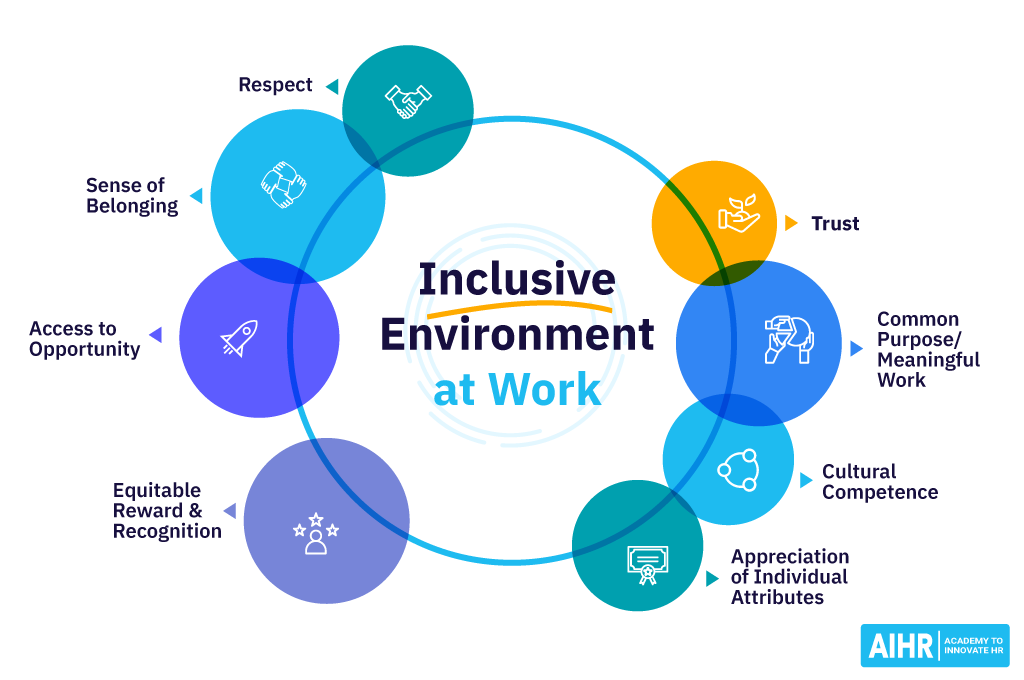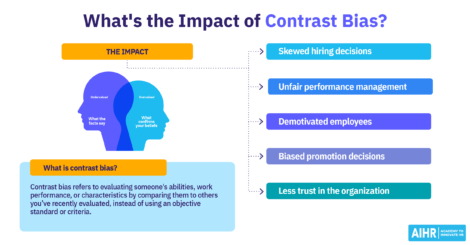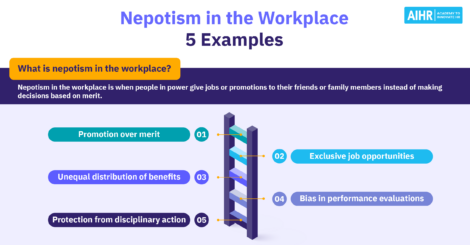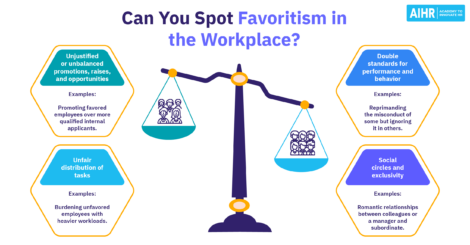7 Actions HR Can Take to Help Create an Inclusive Environment at Work

When an organization nurtures an inclusive environment at work, employees sense the collaboration and fairness that helps their well-being and ability to embrace their full potential. This type of workforce is more innovative, compelled to stay with the company, and ultimately improves the bottom line of the business. So, what can you do to create an inclusive environment at work?
Contents
The importance of an inclusive environment at work
What does an inclusive environment at work look like?
Diversity and inclusion are separate concepts
Ways HR can cultivate an inclusive environment
The importance of an inclusive environment at work
Every human being needs to know they belong and matter to others. Workplaces are becoming increasingly diverse, and not everyone feels like they fit in because of obvious treatment or subtle attitudes they experience. Majority groups will often unintentionally cause others to feel excluded by simply emphasizing what they have in common. Those who feel like outsiders are less likely to feel engaged with and committed to the organizations they work for.
Job seekers are making it a priority to find employers who value inclusion. More and more people, especially the Millennial generation, desire to work in an inclusive environment. This is not only because they worry they may not fit in but also because they don’t want to be a part of a workplace where their co-workers feel excluded. According to a McKinsey survey, 39% of the respondents decided against a job because they perceived the organization to lack an inclusive environment.
If management fully understands the value of an inclusive environment and possesses the necessary people skills, it can embrace the concept and work towards providing an inclusive culture. HR can take the lead in educating management in this area and demonstrating how to create an inclusive environment.
If HR can motivate management to see beyond just putting a non-discrimination policy in place but promoting inclusion as a core value, it won’t be just another rule to follow, but a building block to advancing the organization’s mission.
What does an inclusive environment at work look like?
The atmosphere of an inclusive workplace allows everyone to feel that they are respected, heard, safe, and accepted. Every employee senses they are welcome and supported, despite varying characteristics of gender, age, ethnicity, culture, religion, sexual orientation, physical ability, etc. Employees believe their environment empowers them to thrive, so they bring their best performance.
Employees who feel included are free to voice opinions and concerns without the fear of alienation or victimization. They are confident that they will not only be listened to but that their viewpoints will be embraced.
Policies themselves don’t institute an inclusive environment. A survey done by Harvard Business Review found that 75% of respondents do not feel the effect of diversity policies without a commitment from leadership to enact change.
Leadership is perceived as inclusive when managers listen empathetically to and advocate for their employees. Inclusive managers see their team as valuable individuals, not just employees. They don’t play favorites but treat everyone with the same courtesy, and they are committed to embracing non-discriminatory practices.
Following are inclusive environment examples of simple behaviors managers can demonstrate to display sincerity:
- Showing genuine interest. Greet others with eye contact and a desire to make conversation and listen. There is much to learn from engaging with those you may think you don’t have much in common with.
- Requesting help. Other perspectives can shed new light on how to solve a problem. Reaching out to someone for their input or skills to get a project done makes them feel that they have something to contribute and are a part of the solution.
- Seeking feedback. Make sure everyone is informed and involved in important issues. Asking for someone’s input and opinion makes them feel heard and valued.
- Recognizing contributions. Employees like to feel appreciated on an ongoing basis, not just once a year during a performance review. Periodically pointing out specifically what they do well and how it benefits the organization makes a person feel supported and appreciated for what they have to offer the team.
Diversity and inclusion are separate concepts
Corporate policies often combine diversity and inclusion, but they are two distinct topics. Diversity is the headcount or representation within the workforce, and inclusion is about how employees feel at work. Diversity is about putting different people together, and inclusion is taking deliberate actions to embrace the differences in a respectful and accepting environment. Diverse groups of people need to not only be represented but also have a voice.
Ways HR can cultivate an inclusive environment
HR practices should be transparent, and there should be an active commitment to seek out unconscious bias within your systems and pursue activities to reimagine them.
Consider implementing the following strategies to encourage an inclusive atmosphere in your workplace:
1. Conduct an employee survey and act on the findings
The best way you can find out what employees need in order to feel included is to ask them. Forming a plan based on assumptions is missing the whole point of being inclusive. A confidential survey gives your staff an anonymous means to candidly express themselves. Structure the survey so that respondents can rate their opinions on a scale of 1 to 10 or on a Likert-type scale.
Sample statements include:
- This company offers an environment where I can openly express ideas, opinions, and beliefs.
- This company does not tolerate jokes or teasing about race, ethnicity, culture, sexual orientation, and gender.
- I feel comfortable talking with management and my colleagues about my background and cultural experiences.
- This company is committed to meeting the needs of employees who seek accommodations.
The survey should also include space for employees to share their comments and ideas for ways to foster a more inclusive environment.
Use the survey findings to understand what needs to improve and create an action plan of specific steps that will help you achieve the desired outcomes.
2. Review recruiting and compensation practices
Regularly scrutinize the procedures for recruiting to ensure they don’t negatively impact particular groups and are equally accessible to all applicants. Job descriptions should focus only on objective criteria established through a thorough job analysis.
Compensation policies should be transparent and visibly organized. Guidance for starting salaries, performance-related pay, and bonuses needs to be clearly structured, and all employees should easily understand the criteria. A pay equity analysis is an excellent way to ensure that pay gaps don’t exist by gender, ethnic groups, or other segments of your workforce.
3. Reassess employee policies
Do a thorough review of employment policies to identify any barriers to inclusion. Well-known policies for behavior expectations in the workplace should exist that emphasize treating others with dignity and respect. Outline what constitutes discrimination and harassment, and explain the consequences of unacceptable behavior. Be sure that managers have a thorough understanding of the policies and are ready to act promptly and effectively to any complaints.
Are there grievance and disciplinary procedures in place, and is all of the management following them? Can all employees understand and access the policies without negatively impacting particular groups? Is there a provision for access to independent arbitration or dispute resolution if employees are unsatisfied with the outcome?
Words matter, so take a look at the language used in the policies documentation to see if there is a way to make it more equitable. For example, have you updated maternity leave to parental leave in your documents?
You can also adapt the policy for holidays to honor a variety of religious and cultural practices. Many companies add the benefit of floating holidays in addition to the days the business may be officially closed for the traditionally celebrated holidays.
4. Make inclusion part of the onboarding process
Providing an onboarding experience that makes new employees feel welcome and comfortable sets the tone for how connected they feel to the company. Believing they are acknowledged and included from day one lays the foundation for a new hire’s experience at your company. Keeping inclusion at the forefront of the onboarding process provides an impression that they receive the support they need while they get settled.
Once you’ve laid the foundation, the policies regarding inclusion can be explained. It is essential to articulate that the company values an inclusive workplace and how it is a place where every employee should feel safe. Make sure new hires understand how they can contribute to fostering this environment and that discrimination will not be tolerated. Cover the policies that pertain to expected behaviors and measures to be taken if they were to experience ill-treatment.
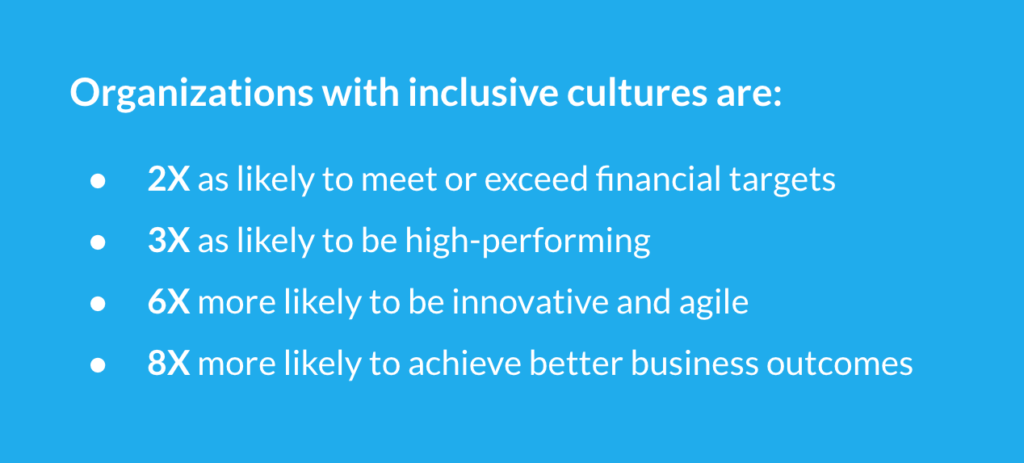
5. Evaluate how daily practices affect everyone
Examining how unconscious bias may affect the informal working culture of your company can identify gaps between written policies and day-to-day practices.
Being mindful of language is important. Sometimes simple terms used in speaking to each other can be demeaning, such as referring to male employees as “men” but to women as “girls.”
If your workforce comprises multiple nationalities, make it a point to always speak the official company language so that everyone can participate in the conversation. Providing training in this area can help staff become more aware of how anything from lunchroom conversation to company events can exclude certain people.
Having activities that gather staff together and promote inclusion and understanding is a good idea. Cultural events hosted in the (virtual) workplace that allow team members to honor their traditions of food, clothing, music, or activities can expose everyone to diverse perspectives and experiences to celebrate differences in a social setting.
6. Bring inclusion to the virtual workplace
Many employees appreciate the benefits of remote work, but it does present certain challenges, including the employees’ sense of inclusion. Employers must adapt to these situations to prevent virtual locations from being a barrier to connecting with remote workers.
Managers can promote inclusion with their remote teams by maintaining a human connection. They should check in with everyone regularly and conduct virtual social and team-building activities.
You can also offer remote employees the same types of support as those on location, such as flexibility with schedules and deadlines, as well as mental health resources.
7. Set up KPIs and measure progress
Most biases in the workplace are automatic responses that happen unconsciously. It can be difficult to shift a company’s culture from inherently gravitating to those who “fit in” to an atmosphere of inclusion, but by measuring something, you can make it a priority more easily.
Policies and programs put in place to transform this will not be effective unless there are meaningful metrics to track inclusion efforts and outcomes. Organizations committed to inclusion need the metrics to reveal whether actions taken are actually accomplishing what they were intended to.
Using HR KPIs can move an organization toward an inclusive workplace. You should review these regularly and change them as needed to meet business goals and further develop your inclusion program.
Some of the areas to focus on include:
- Recruitment. Who do you consider an “ideal” employee? Who is getting hired and who is being turned away? Compare the number of applications you receive from those in the monitored groups against the potential pool of applicants that exist from the monitored groups. Track who you ultimately select from the monitored groups for open positions as well.
- Advancement. Do people of different backgrounds have the same opportunities for advancement? Is there a tendency to transition certain types of employees over others? Track promotions within monitored groups compared to those awarded to those in the dominant group.
- Retention. Are certain groups less satisfied with their work environment and less committed to the company? Are individuals from certain groups more likely to be terminated? Compare the average tenure for monitored group employees to the average tenure of employees who are members of the dominant group.
To wrap up
Every organization is unique and requires a tailored approach for cultivating an inclusive mindset. This objective takes a conscious and robust effort, and it is a learning process that will most certainly evolve. Management must embrace goals and policies. Your organization will need to periodically adapt these to meet the changing needs of the current and potential workforce. HR can encourage and support inclusion by recognizing and fighting unconscious bias.
If you want to learn more about D&I and future-proof your HR skill set, check out our Diversity & Inclusion Certification Program!
Weekly update
Stay up-to-date with the latest news, trends, and resources in HR
Learn more
Related articles
Are you ready for the future of HR?
Learn modern and relevant HR skills, online





